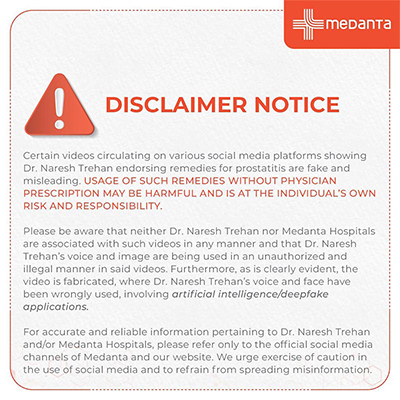An FDG-18 PET scan, or Fluorodeoxyglucose-18 Positron Emission Tomography scan, is a state-of-the-art nuclear imaging technique used to detect and evaluate various cancers. The process involves injecting a radioactive tracer called FDG-18, a glucose analogue, into the patient's body. This tracer accumulates in areas with high metabolic activity, such as cancer cells, and emits positrons that the PET scanner detects. The resulting images provide detailed information about the location, size, and extent of cancerous tumors.
How Does It Help?
The FDG-18 PET scan offers several advantages over traditional imaging methods in cancer diagnosis:
It is highly sensitive and can detect cancer at an early stage when it may not be visible on other imaging modalities. This early detection allows timely intervention and treatment, improving patient outcomes.
This scan provides functional information about the metabolic activity of tumors, helping oncologists determine cancer stages and plan appropriate treatment strategies.
FDG-18 PET scans offer comprehensive imaging of the entire body, aiding in staging and detecting metastases in various cancers.
FDG-18 PET scans are non-invasive and cause minimal discomfort for patients.
The scan can assess the response to treatment, monitor disease progression, and detect cancer recurrence.
Preparation
Before undergoing an FDG-18 PET scan, specific preparations are necessary to ensure accurate results:
Patients should not eat or drink for at least six hours before the procedure to minimize background glucose levels.
It is essential to inform the healthcare team about any medications being taken, as some drugs can interfere with the scan.
Patients should avoid strenuous physical activity for 24 hours before the scan to prevent false-positive results.
Following all instructions from medical staff is crucial to ensure the scan's effectiveness.
Procedure
The FDG-18 PET scan is non-invasive and does not require anesthesia or surgery. Once the patient is prepared, healthcare providers inject the radioactive tracer FDG-18 into a vein, typically in the arm. The tracer takes some time to distribute throughout the body, so patients may need to wait approximately one hour before the scan. When ready, the patient is positioned on a scanning table and slowly moved into the PET scanner. The scan usually takes 30 minutes to an hour, depending on the areas being imaged.
Post-Treatment
After the FDG-18 PET scan, patients can resume their normal activities immediately. There are no restrictions or limitations following the procedure, but it is essential to stay well-hydrated to help eliminate the radioactive tracer from the body. Scan results are typically available within a few days and will be discussed with the patient by their doctor. In some cases, additional imaging or procedures may be recommended based on the scan findings.
Benefits
The FDG-18 PET scan offers numerous benefits:
It provides highly accurate and detailed information about the presence, location, and extent of cancerous tumors, essential for precise staging and treatment planning.
The scan helps differentiate between benign and malignant lesions, reducing the need for unnecessary invasive procedures.
FDG-18 PET scans can detect cancer recurrence earlier than other imaging modalities, allowing prompt intervention.
Overall, the FDG-18 PET scan is an invaluable tool in the fight against cancer.
Risks
While the FDG-18 PET scan is generally safe, some potential risks are associated with the procedure:
The most significant risk is exposure to radiation from the FDG-18 tracer. However, healthcare providers carefully control the radiation amount to minimize potential harm. The benefits of the scan in diagnosing and monitoring cancer usually outweigh the risks.
Some patients may experience mild discomfort or allergic reactions at the injection site or have a metallic taste in their mouth during the scan.
It is essential to inform your doctor of any allergies or previous adverse reactions to similar procedures.
What Makes It Unique?
The FDG-18 PET scan is unique because it provides functional and metabolic information about cancerous tumors. Unlike other imaging techniques that primarily offer anatomical details, the FDG-18 PET scan reveals the metabolic activity of tumors, crucial in determining cancer aggressiveness and selecting the most appropriate treatment approach. Additionally, the scan can detect small lesions that may not be visible on other imaging modalities, enabling early intervention. The combination of anatomical and metabolic data obtained from the FDG-18 PET scan makes it a powerful and revolutionary diagnostic tool in oncology.
Understanding the power of FDG-18 PET scans in cancer detection, discuss it with your doctor. Early detection is critical in fighting cancer, and the FDG-18 PET scan can provide vital information to guide your treatment journey. Take control of your health and explore the possibilities offered by this revolutionary diagnostic tool.
FAQs
What is an FDG-18 PET scan?
An FDG-18 PET scan is a diagnostic imaging technique that uses a radioactive tracer called Fluorodeoxyglucose-18 to visualize the metabolic activity of different tissues and organs in the body.
What does FDG-18 stand for?
FDG-18 stands for Fluorodeoxyglucose-18, which is the radioactive tracer used in the FDG-18 PET scan.
How does an FDG-18 PET scan work?
During an FDG-18 PET scan, the radiologist or oncologist injects the radioactive tracer FDG-18 into the patient. The tracer is attracted to areas with high glucose metabolism, such as cancer cells. The tracer emits positrons, which the PET scanner detects, allowing for the creation of detailed images of metabolic activity.
What is the purpose of an FDG-18 PET scan?
An FDG-18 PET scan assesses the metabolic activity of different tissues and organs in the body. It aids in detecting, staging, and monitoring various medical conditions.
What conditions can be detected using FDG-18 PET scans?
FDG-18 PET scans can detect various medical conditions, including cancer, heart disease, brain disorders, infections, autoimmune diseases, and metabolic disorders.
How is an FDG-18 PET scan different from other imaging techniques?
FDG-18 PET scans provide functional information about the metabolic activity of tissues and organs, while other imaging tests, such as CT scans or MRIs, provide structural information.
Is FDG-18 PET scanning safe?
FDG-18 PET scanning is generally safe, but it exposes the patient to a small amount of radiation. The advantages of the scan usually outweigh the risks, especially when critical information is required for diagnosis and treatment planning.
How long does an FDG-18 PET scan take?
The duration of an FDG-18 PET scan varies and depends on the specific procedure and the area being scanned. Generally, the scan takes about 1 to 2 hours, including the preparation time.
What preparation is required before undergoing an FDG-18 PET scan?
Before undergoing an FDG-18 PET scan, following specific preparation instructions provided by your doctor is essential. These may include fasting several hours before the scan and avoiding strenuous physical activity.
Can I eat or drink before an FDG-18 PET scan?
You will most likely be instructed to fast for several hours before the FDG-18 PET scan. This is to ensure accurate results, as the presence of food or beverage in the digestive system can affect the scan interpretation.
Can I take my medication before an FDG-18 PET scan?
In most cases, you can continue taking your medication as prescribed before an FDG-18 PET scan. However, informing your healthcare provider about any ongoing medications is crucial.
Can I drive myself home after an FDG-18 PET scan?
You can usually drive yourself home after an FDG-18 PET scan. However, confirming this with your healthcare provider is always a good idea, as some patients may feel drowsy or experience side effects from the procedure.
Is sedation necessary for an FDG-18 PET scan?
Sedation is generally unnecessary for an FDG-18 PET scan. The scan is a non-invasive procedure, and most patients tolerate it without discomfort.
What should I wear for an FDG-18 PET scan?
Wear comfortable clothing and avoid metal objects like jewellery or belts, as they can interfere with the scan.
Can I undergo an FDG-18 PET scan if I am pregnant or breastfeeding?
Pregnant or breastfeeding women should consult their doctor first due to the radiation exposure involved, which may pose risks to the developing foetus or infant.
Can FDG-18 PET scans detect cancer?
FDG-18 PET scans effectively detect various types of cancer by identifying areas with increased metabolic activity, indicating the presence of cancer cells.
Can FDG-18 PET scans detect Alzheimer's disease?
FDG-18 PET scans can detect early signs of Alzheimer's disease by revealing metabolic abnormalities in the brain.
Can FDG-18 PET scans detect heart disease?
FDG-18 PET scans assess blood flow to the heart and identify areas of reduced function, aiding in diagnosing and managing heart disease.
Can FDG-18 PET scans detect brain disorders?
FDG-18 PET scans detect various neurological disorders by evaluating metabolic activity in brain tissue.
Can FDG-18 PET scans detect infections or inflammations?
FDG-18 PET scans detect infections and inflammation by revealing areas of increased metabolic activity associated with these conditions.
Can FDG-18 PET scans detect metabolic disorders?
FDG-18 PET scans diagnose metabolic disorders by evaluating metabolic activity in different tissues and organs.
Can FDG-18 PET scans detect autoimmune diseases?
FDG-18 PET scans aid in diagnosing autoimmune diseases by evaluating metabolic activity in affected tissues and organs.
Can FDG-18 PET scans detect organ disorders?
FDG-18 PET scans diagnose renal disorders, lung diseases, liver ailments, or pancreatic diseases by evaluating metabolic activity in these organs.
Can FDG-18 PET scans detect lymphoma?
FDG-18 PET scans effectively detect lymphoma by revealing areas of increased metabolic activity.
Can FDG-18 PET scans detect distant metastases?
FDG-18 PET scans detect distant metastases by evaluating metabolic activity in various organs, lymph nodes, and tissues, helping determine the extent of the disease.


